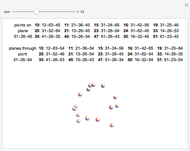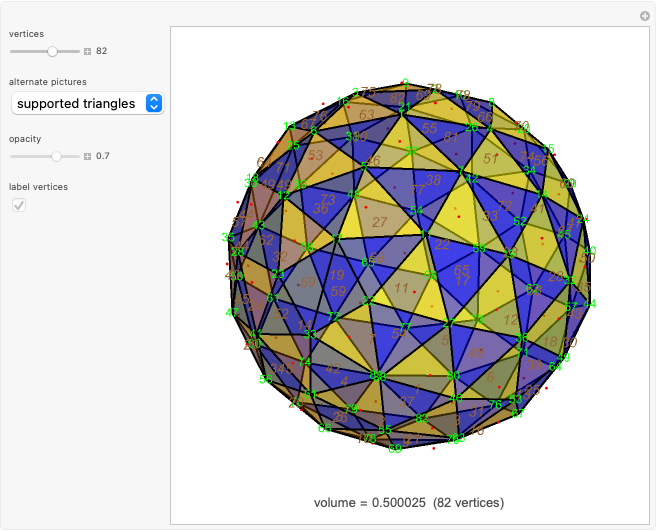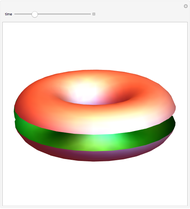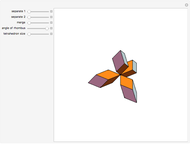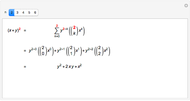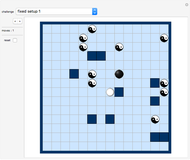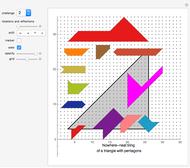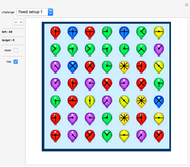Touching Planar Polycubes

Requires a Wolfram Notebook System
Interact on desktop, mobile and cloud with the free Wolfram Player or other Wolfram Language products.
A planar polycube is a polycube that can be placed in such a way that it extends only one cube high into the third dimension. For each known integer  , here are the smallest known planar polycubes such that
, here are the smallest known planar polycubes such that  congruent copies all touch each other.
congruent copies all touch each other.
Contributed by: Karl Scherer (April 2008)
Additional contributions by: Erich Friedman
Open content licensed under CC BY-NC-SA
Snapshots
Details
Problem a:
A "polycube" is a polyform based on cubes of the same size, the cubes being glued together on full faces. A  -cube is a polycube made from
-cube is a polycube made from  cubes. A planar
cubes. A planar  -cube is one that can be placed in such a way that it extends only one cube high into the third dimension. Simple examples are rods
-cube is one that can be placed in such a way that it extends only one cube high into the third dimension. Simple examples are rods  and planar boxes
and planar boxes  .
.
For each given integer  , the touching planar polycubes problem asks for the smallest
, the touching planar polycubes problem asks for the smallest  such that
such that  congruent
congruent  -cubes can mutually touch each other in three-dimensional space. It was researched first in 1986 by the author of this Demonstration. In 2005 Erich Friedman found the best solution for
-cubes can mutually touch each other in three-dimensional space. It was researched first in 1986 by the author of this Demonstration. In 2005 Erich Friedman found the best solution for  (see case 5). All other solutions are by the author. The case
(see case 5). All other solutions are by the author. The case  (with 119 cubes in a very complex shape) is the highest
(with 119 cubes in a very complex shape) is the highest  ever solved. It is not known whether there are solutions for any
ever solved. It is not known whether there are solutions for any  . A definite insurmountable barrier is
. A definite insurmountable barrier is  , so there is still some space for research.
, so there is still some space for research.
All interesting answers are given as cases 1 to 8 in this Demonstration.
Problem b:
As an additional task one can ask the same question in the restricted  space, where the third dimension is only 2 units high. All interesting answers are given as cases 9 to 16 in this Demonstration.
space, where the third dimension is only 2 units high. All interesting answers are given as cases 9 to 16 in this Demonstration.
This problem area is far from fully analyzed or understood and you might well find better solutions than the ones presented here for same cases.
If the polycube is allowed to be 2 units high instead of 1 unit, then for each  we can find a
we can find a  such that
such that  copies of a certain
copies of a certain  -cube touch each other. The polycubes can simply be chosen to be the union of two joined rods which are at right angles to each other, one rod being positioned one unit higher than the other.
-cube touch each other. The polycubes can simply be chosen to be the union of two joined rods which are at right angles to each other, one rod being positioned one unit higher than the other.
Best solutions :
The best known solutions  for given
for given  (problem a):
(problem a):

The best known solutions  for given
for given  (problem b):
(problem b):

Another area for further research: In all the solutions given in this Demonstration, the polycubes are placed on an orthogonal integral grid. Are the best solutions different if the polycubes are not restricted to such a grid?
Main manipulations:
The colored sliders move the polycubes apart, one slider per piece.
The "tiles displayed" slider builds up the assembly piece by piece.
The solution for  (problem a) was contributed by Erich Friedman.
(problem a) was contributed by Erich Friedman.
Permanent Citation







